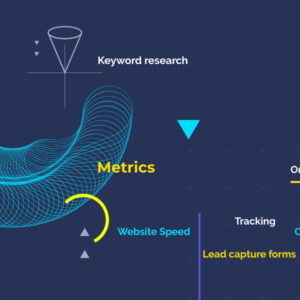
Business analysis is the practice of identifying business problems, evaluating the impact of those problems, and finding solutions to those problems. It involves analyzing data, trends, and other information related to the business in order to make better business decisions. While there are many techniques for business analysis, this article focuses on three of the most popular techniques: Business Model Canvas, Lean Canvas, and SWOT Analysis.
Introduction to Business Analysis
Business analysis is a process that helps businesses identify problems and develop solutions. It involves gathering data, analyzing it, and making informed decisions based on the results. Business analysis helps businesses understand their customers, markets, and competitors, and develop strategies to improve their operations.
Business analysis can be used for a variety of purposes, including product development, market research, process improvement, cost reduction, and more. It can also be used to develop strategies for achieving goals, such as increasing revenue or reducing costs.
Business analysis is an important part of any successful business. It helps businesses identify problems, develop solutions, and create strategies for growth and success.
What is Business Model Canvas?
Business Model Canvas, or BMC, is a visual representation of a business model. It is a tool used to help businesses understand the components of their business model and how they interact with each other. The canvas is divided into nine sections, each representing a different aspect of the business: customers, value proposition, channels, customer relationships, revenue streams, key resources, key partners, key activities, and cost structure.
The Business Model Canvas is a great tool for businesses to use to identify opportunities and weaknesses in their business model. It helps businesses understand their customers, their value proposition, and the channels they use to reach their customers.
Benefits of Using Business Model Canvas
The Business Model Canvas is a powerful tool for businesses of all sizes. It helps businesses identify opportunities, develop strategies, and create plans for growth and success.
The Business Model Canvas helps businesses identify their value proposition, customer segments, and channels. It also helps businesses understand their cost structure and identify opportunities for cost savings. The canvas can also be used to identify potential partners and activities that will help the business grow.
The Business Model Canvas is also a great tool for brainstorming and developing new ideas. It helps businesses identify new opportunities and develop strategies for taking advantage of them.
How to Use Business Model Canvas
Using the Business Model Canvas is easy. All you need to do is fill out the nine sections of the canvas. Start by identifying your customers and your value proposition. Then, identify the channels you use to reach your customers.
Next, identify the customer relationships you have. This could include customer service, loyalty programs, or other strategies. Then, identify the revenue streams your business has. This could include sales, subscriptions, or other sources of income.
Next, identify the key resources your business needs, such as human resources, technology, or materials. Then, identify the key partners your business works with. This could include suppliers, partners, or other organizations.
Next, identify the key activities your business needs to perform. This could include manufacturing, marketing, or other activities. Finally, identify the cost structure of your business. This could include labor costs, material costs, or other costs.
Once you have filled out the canvas, you can use it to identify opportunities and develop strategies for growth and success.
What is Lean Canvas?
The Lean Canvas is similar to the Business Model Canvas, but it is focused specifically on startup businesses. It is a tool used to help businesses identify opportunities and develop strategies for growth.
The Lean Canvas is divided into nine sections, each representing a different aspect of the business: problem, solution, unique value proposition, key metrics, unfair advantage, customer segments, channels, revenue streams, and cost structure.
The Lean Canvas is a great tool for startups to use to identify opportunities and weaknesses in their business model. It helps startups understand their customers, their value proposition, and the channels they use to reach their customers.
Benefits of Using Lean Canvas
The Lean Canvas is a powerful tool for startups. It helps startups identify opportunities, develop strategies, and create plans for growth and success.
The Lean Canvas helps startups identify their problem, solution, and unique value proposition. It also helps startups understand their key metrics and unfair advantage. The canvas can also be used to identify potential customer segments and channels.
The Lean Canvas is also a great tool for brainstorming and developing new ideas. It helps startups identify new opportunities and develop strategies for taking advantage of them.
How to Use Lean Canvas
Using the Lean Canvas is easy. All you need to do is fill out the nine sections of the canvas. Start by identifying the problem your business is trying to solve. Then, identify the solution your business offers.
Next, identify your unique value proposition. This could include what makes your product or service different from other similar products or services. Then, identify the key metrics you use to measure success. This could include customer satisfaction, revenue, or other metrics.
Next, identify your unfair advantage. This could include a patent, exclusive technology, or a unique process. Then, identify your customer segments. This could include demographic information, interests, or other criteria.
Next, identify the channels you use to reach your customers. This could include online advertising, physical stores, or other channels. Then, identify the revenue streams your business has. This could include sales, subscriptions, or other sources of income.
Finally, identify the cost structure of your business. This could include labor costs, material costs, or other costs. Once you have filled out the canvas, you can use it to identify opportunities and develop strategies for growth and success.
What is SWOT Analysis?
SWOT Analysis is a tool used to identify a business’s strengths, weaknesses, opportunities, and threats. It is a powerful tool for businesses to use to understand their environment and develop strategies for success.
The SWOT Analysis is divided into four sections: Strengths, Weaknesses, Opportunities, and Threats. Each section represents a different aspect of the business: Strengths represent the positive aspects of the business, Weaknesses represent the negative aspects, Opportunities represent potential areas of growth, and Threats represent areas of risk.
The SWOT Analysis is a great tool for businesses to use to identify opportunities and weaknesses in their business. It helps businesses understand their environment and develop strategies for growth and success.
Benefits of Using SWOT Analysis
The SWOT Analysis is a powerful tool for businesses of all sizes. It helps businesses identify opportunities, develop strategies, and create plans for growth and success.
The SWOT Analysis helps businesses identify their strengths, weaknesses, opportunities, and threats. It also helps businesses understand their environment and identify areas of risk. The analysis can also be used to identify potential partners and activities that will help the business grow.
The SWOT Analysis is also a great tool for brainstorming and developing new ideas. It helps businesses identify new opportunities and develop strategies for taking advantage of them.
How to Use SWOT Analysis
Using the SWOT Analysis is easy. All you need to do is fill out the four sections of the analysis. Start by identifying your strengths. These could include a competitive advantage, a strong team, or a valuable resource.
Next, identify your weaknesses. These could include a lack of resources, weak customer relationships, or other weaknesses. Then, identify your opportunities. These could include new markets, new technologies, or other opportunities.
Finally, identify your threats. These could include competition, changing customer needs, or other threats. Once you have filled out the analysis, you can use it to identify opportunities and develop strategies for growth and success.
Strategies for Business Analysis
Once you have used the Business Model Canvas, Lean Canvas, and SWOT Analysis to identify opportunities and weaknesses in your business, it’s time to develop strategies for growth and success.
There are many strategies you can use. For example, you could focus on improving customer service, developing new products or services, or expanding into new markets. You could also focus on cost reduction, increasing efficiency, or developing new channels.
No matter what strategy you choose, it’s important to remember that business analysis is an ongoing process. You should continuously analyze your business and make adjustments to your strategies as needed.
Conclusion
Business analysis is an important part of any successful business. It helps businesses identify problems, develop solutions, and create strategies for growth and success. By using techniques such as the Business Model Canvas, Lean Canvas, and SWOT Analysis, businesses can identify opportunities and develop strategies for growth and success.
Business analysis is an ongoing process. You should continuously analyze your business and make adjustments to your strategies as needed. By implementing the techniques discussed in this article, you can unlock the potential of your business and achieve success.
Nyamga Business Analysis Business Model Canvas Lean Canvas SWOT Analysis







